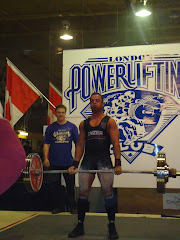







 - Spokane Washington
- Spokane Washington




Note: Pretty much every government funded facility in the united states is ridiculously amazing (ie. Army, Navy and Air Force)
Another kingpin in the training world is Atheltes Performance located in Arizona. This facility was voted #1 training facility in the world. If you want to see why, click on the link
http://www.athletesperformance.com/
I hope this gives you all a good idea of what types of facilities are out there. So next time you walk into you commercial gym..remember to shake your head.


One of the biggest mistakes I see fighters making is only training for muscle endurance. High reps and light weight seems to be the norm for so many fighters. However, neglecting power and strength is a big mistake for any fighter. If you factor in all the boxing, muay thai, wrestling and jui jitsu a MMA fighter does, it is alot of overall muscular endurance work.
That is why any strength and conditioning program for MMA should focus on 2 different types of training workouts. One workout would focus mainly on building explosive power, strength and overall body conditioning. Load would be in the 75-85% of 1RM range and the rest would be based on load and volume.
The 2nd workout would be an anareobic based workout consisting of sprinting, circuits, tire flips, sled work etc. Basically anything where you are pushing at a high intensity in an exhuasted state. We would also include barbell circuits focusing on grip strength and core work. As stated in a previous article, speed work and especially sprinting are a critical aspect of any athletes training. Refer to our article on SPEED TRAINING for more info.
One important aspect of training to always remember is increasing the bodies neural capacity. When the body begins to get tired and the central nervous systems begins to shutdown, the mind has a difficult time processing motor movements, be it simple or complex. Therefore, it is important for a fighter to reach this state on a regular basis and then perform complex cognitive tasks such as submissions, sprawling and boxing techniques. The more often we train in this CNS shutdown state, the easier it will be when we reach it in a fight.
This article just touches breifly on MMA strength and conditioning. To have a complete program, you must seek out a trained professional who is experienced in program design. At Power Systems we have the experience and always push all our fighters to the limit. It is important to a fighter to be comfortable being UNcomfortable! What that basically means is that a fighter must constantly train harder and push the body more than he would in an actual fight. If your training pushes you to your absolute limit, the fight now becomes the easy part. A fighter's training should always be harder than the actual fight.



The Lift...
______________________________________________________________________



